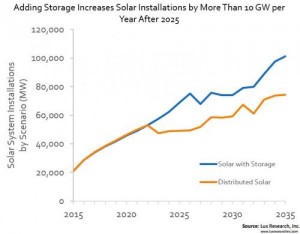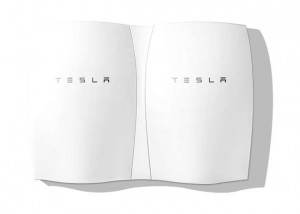Energy storage for solar systems will be $8 billion global market in 2026
Energy storage, combined with falling distributed solar power costs, will accelerate adoption of solar in coming years
Energy storage systems for distributed solar are gaining market traction and should be worth $8 billion in 2026, according to a new study from Lux Research.
Solar-plus-storage is key for solar to overcome limitations like intermittency and the lack of power after dark, according to Lux.
Energy storage will increase the distributed solar market by 25 GW annually by 2026.
Adding storage adds costs, affecting revenue streams and addressable market size, but as installed solar system costs decline — from $3.83/W in 2015 to $1.87/W in 2035 — an attractive economic case will emerge in 2023, leading to strong growth.
“As the solar-plus-storage market matures, interesting developments will unfold on a number of fronts. There will be more vertical integration between the two industries, increased financing options and even a move towards energy-sharing between communities,” said Cosmin Laslau, Lux Research senior analyst and lead author of “Helping Renewables Shine On: Analyzing the New Business Cases Where Batteries Make Sense for Solar Systems.”
Lux Research analysts studied the impact on distributed solar of its integration with storage to maintain growth. Among their findings:
- Solar-storage partnerships begin to emerge. Partnerships between Stem and SunPower, Green Charge Networks and SunEdison, and Sonnen and Sungevity hint at the industry’s future. First Solar even joined a $50 million investment in Younicos, a leader in grid-scale energy storage integration.
- Software is a key differentiator. Leaders like SolarCity and others are offering demand management software that can help integrate storage. Sunverge’s system can link to smart devices and electric vehicles, while Sonnenbatterie’s software can analyze weather data to optimize solar consumption and storage.
- Policy support has big impact. Thanks to policy support, Germany has installed 12,000 solar-plus-batteries systems since 2013 with a recent growth rate of 35 per cent. Japan has launched a subsidy program to cover two-thirds of the installation costs for lithium-ion battery systems at 1kWh or larger, while California offers a $1.46/W incentive — and mandates utilities to install 1.3 GW of storage by 2020.








